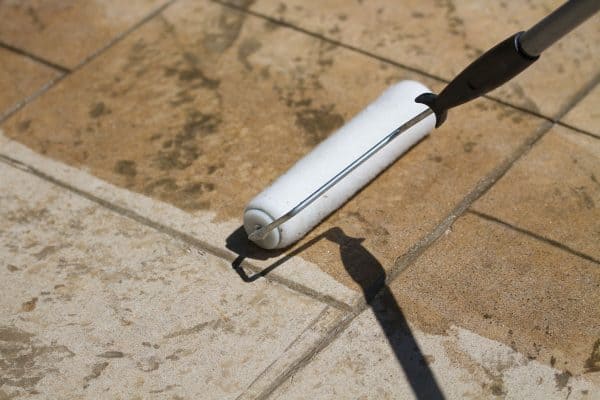Disclosure: We may get commissions for purchases made through links in this post.
Maybe you're wondering, why do you need edging for your pavers? Isn't installing pavers enough? To answer your question, we found that edging restraints the movement and shifting of the pavers. That is why it is also widely known as paver edge restraints. It also keeps the pavers tightly and neatly held together.
So how does paver edging work? Contrary to popular belief, paver edging works not by holding the pavers themselves but by holding the bedding layer firmly in place. You have to note that you have to expose the gravel base by removing the bedding layer so that the edge restraints can work properly.
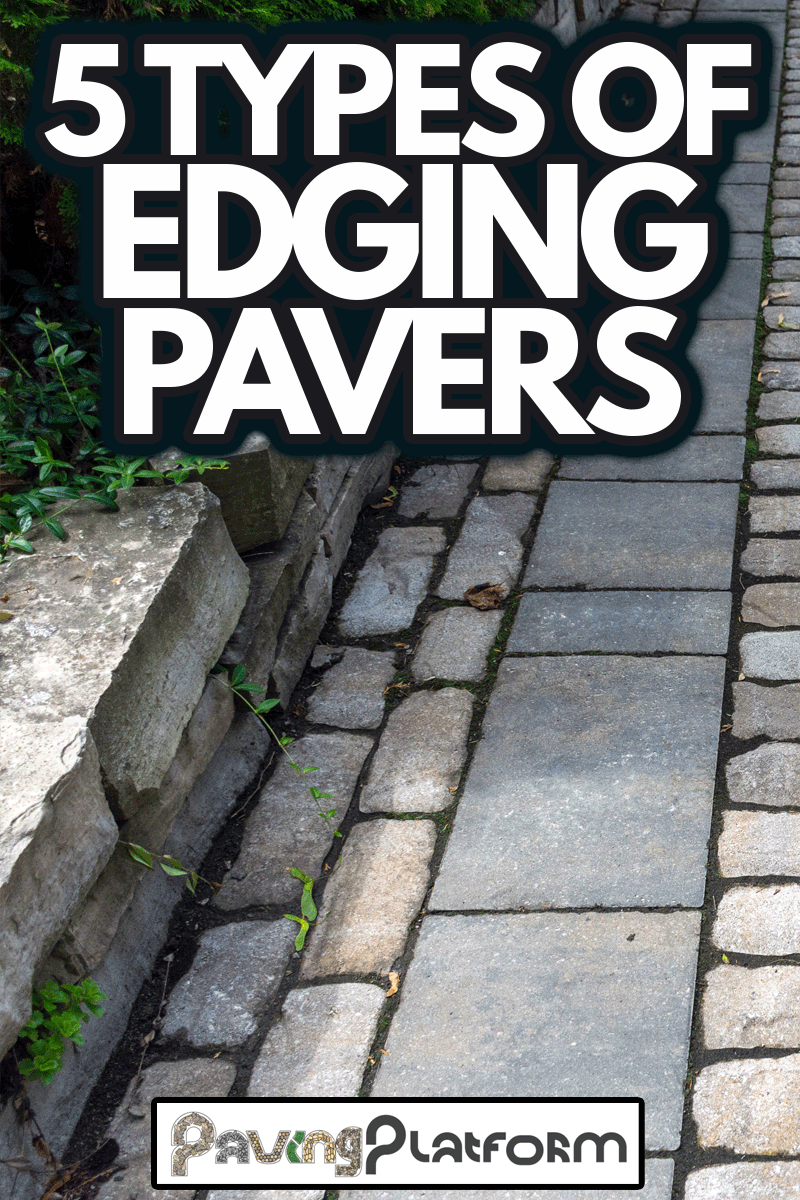
Knowing what type of edging restraints are out there not only helps you secure the quality and durability of your pavers, it also adds to the aesthetics you are going for. With this, we researched the types of edging for pavers, and here's what we found.
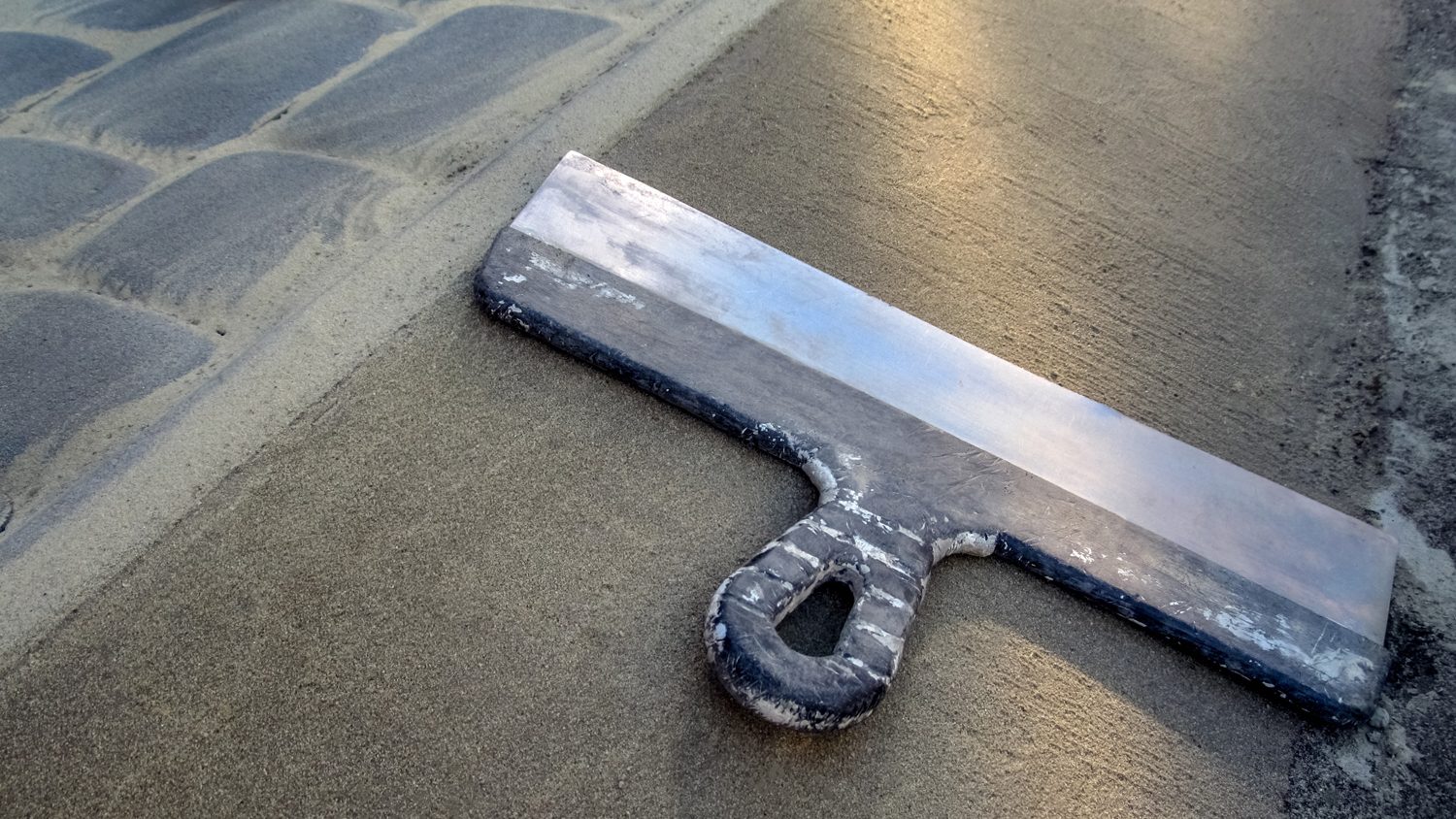
1. Concrete Edge Restraint
Concrete edge restraints have long been in the scene when it comes to paver edge restraints. This is the edge restraint choice for many. Why? Here are a few pros and cons of concrete edge restraint you should consider.
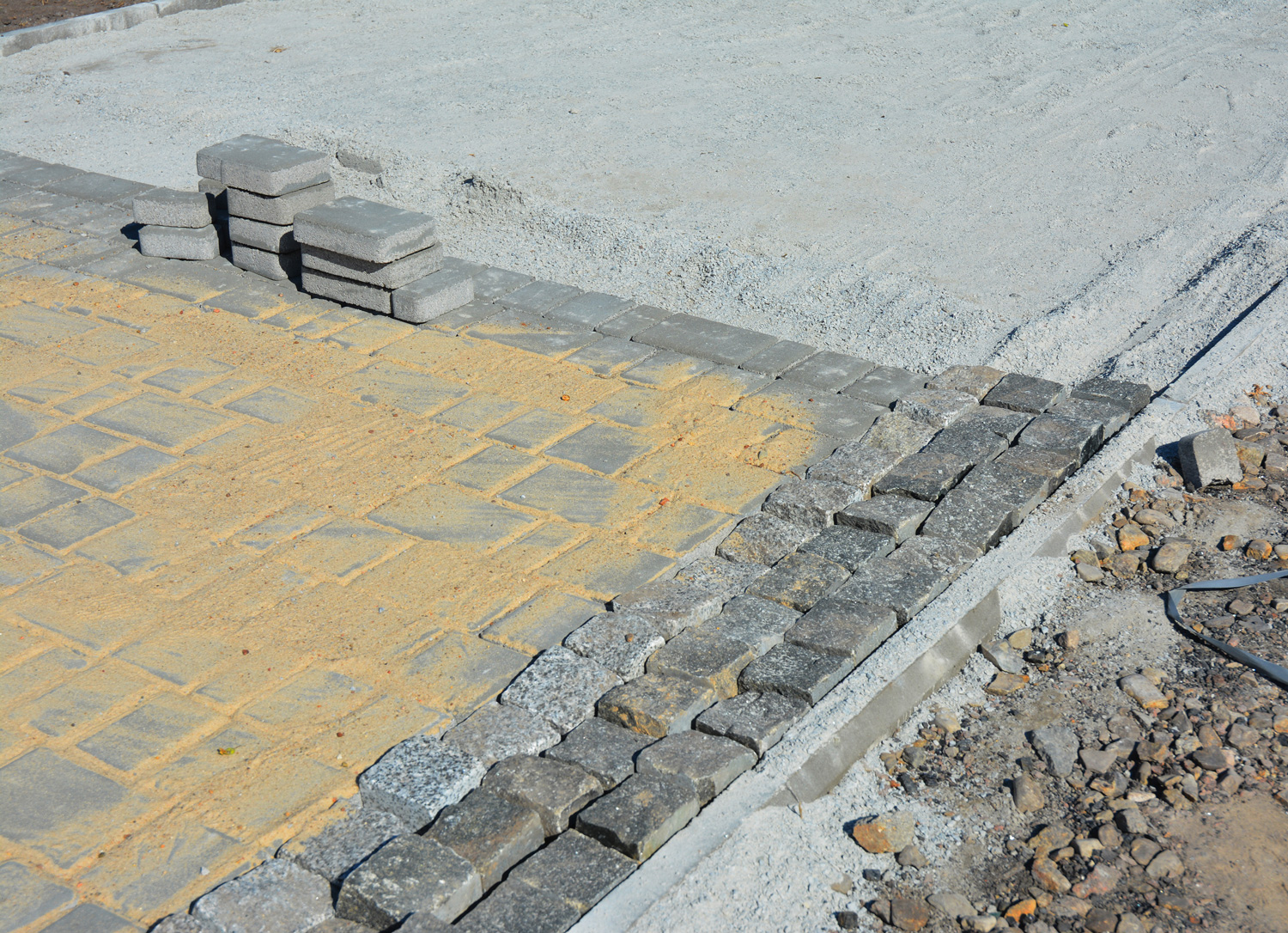
Pros
Stability- As we all know, concrete is rigid, bonds to the earth, and can be buried for extra stability. It also holds up to vehicular traffic stronger compared to plastic edge restraints.
Cost-Effective- One of the main reasons people prefer concrete edge restraint is its cost. And believe it or not, concrete is cheaper than other types of paver edge restraints.
Cons
Inflexible- Since concrete is rigid, concrete edge restraints are not easily as consistent as plastic edge restraints. Human error can also contribute to the inconsistency of the application of concrete edge restraint.
Cracking and chipping- Due to drastic changes in weather such as extremely cold or extremely hot, concrete can expand rapidly to the point of cracking. Concrete chipping also happens naturally over time.
Harder to hide- Hiding concrete is plain difficult. Using concrete edge restraints can affect the aesthetics of your hardscape.
Furthermore, here are some examples of concrete edge restraint:
Concrete Curb Border
As the name suggests, this edger is a curb-style concrete border that provides a sturdy and neat finish to the edge of your pavers. Most concrete curb edger is used for commercial applications and driveways, given that it holds the pavers in place no matter what.
Concrete curb trowels are used in forming this concrete edge restraint. However, the main downside of this edger is that it's extremely time-consuming and requires the fabrication of formworks to pour the curb before any base, bedding layer, or pavers are added.
Click here for this concrete curb trowel with a plastic handle on Amazon.
Concrete Bond Beam
A concrete bond beam is a hidden strip of concrete integrated into your pavers. To install this, you must place wet concrete over your base and set your border in the concrete. This kind of concrete edge restraint is solid, reliable, and hidden away to secure your pavers for good. However, to execute properly, some skills are required and sometimes you have to ask for professionals to do this.
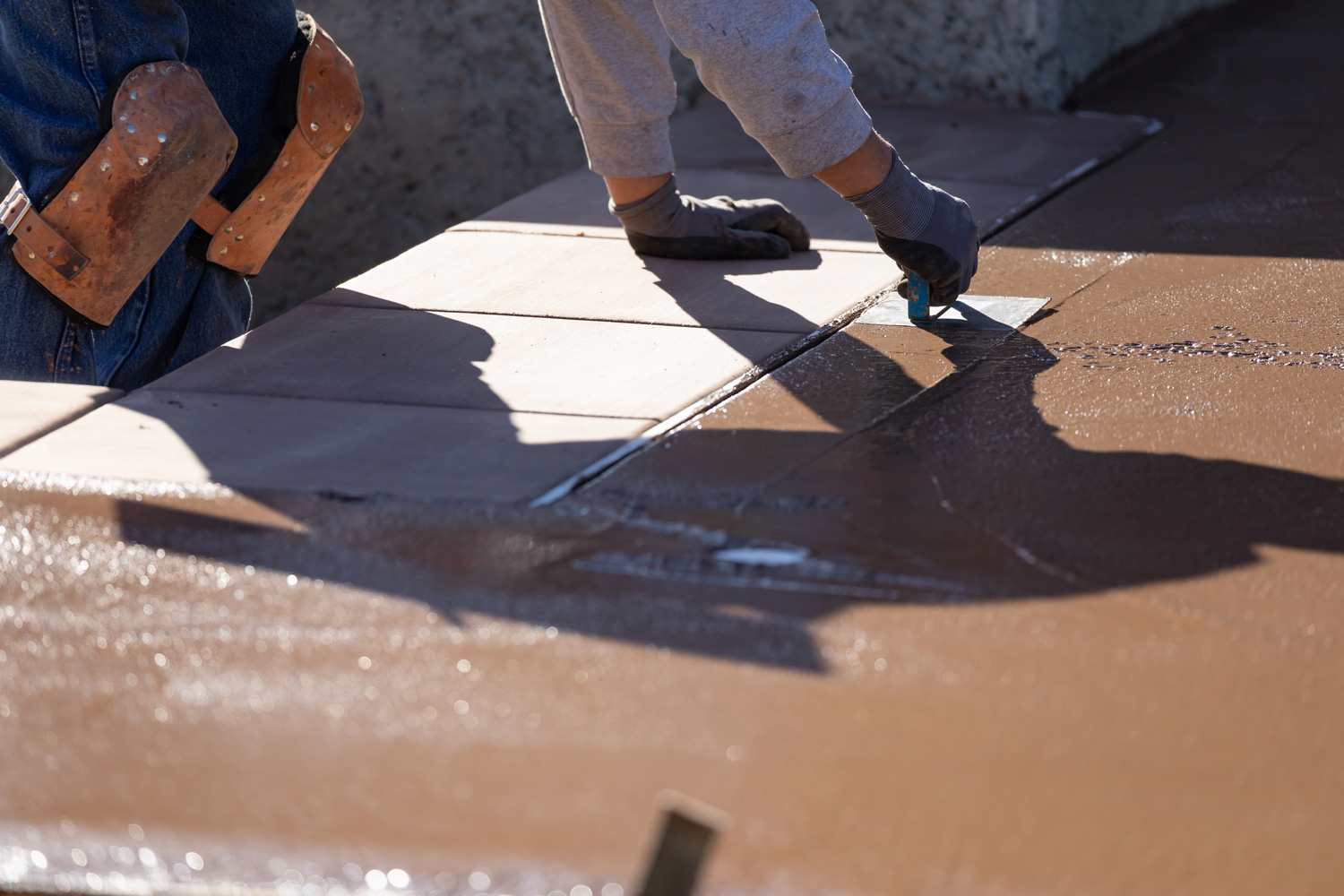
2. Plastic Edge Border Restraint
Nowadays, plastic edge restraint is leading the industry standard for paver edge restraints mainly because they are consistently mass-produced. Take a look at a few pros and cons of plastic edge restraint.
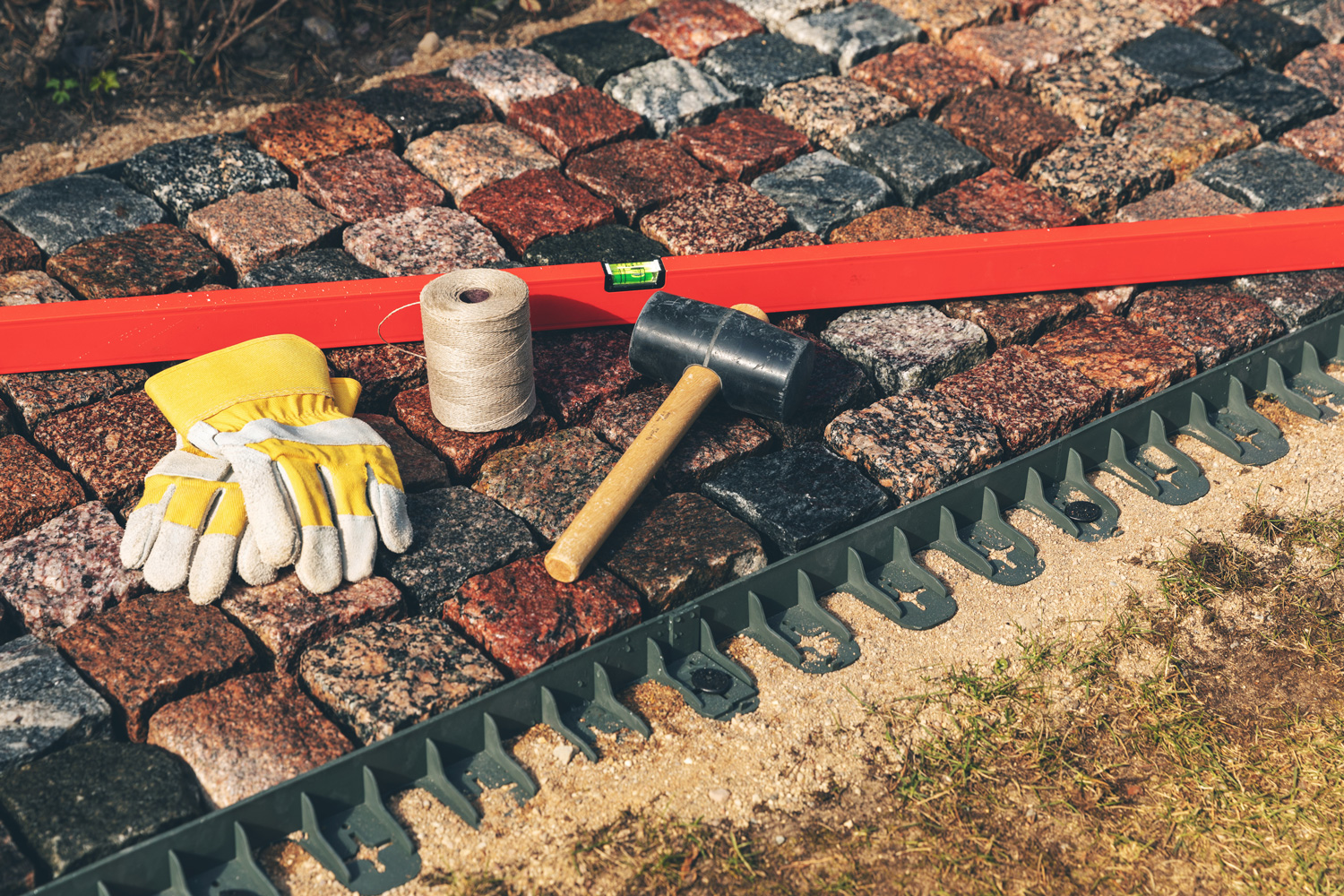
Pros
Flexible - Plastic edge restraints are famous for their flexibility making them easy to use on both straight and curved hardscapes.
Durable - The fact that plastic edge restraints can withstand weather, unlike concrete, makes it on the pros list.
Easily hidden - Another reason why plastic is dominant over concrete is that it can be easily hidden due to its design with gaps between each bracket. In fact, you can opt to plant grass to cover the entirety of the restraint.
Easy to install - Installation of plastic edge restraint is quite simple. All you need are some spikes and a hammer, then you're good to go.
Cons
Expensive - The only downside of plastic edge restraint is its cost. Since it is manufactured, it's more expensive than concrete. However, the cost is justified by the quality of material you are receiving.
Below are some examples of plastic edge restraints.
Snap Edge Restraint
This edge restraint snaps the paver's layout and offers flexibility in creating complex curvatures. Its main feature is the buttressed supports along the back end that supports the edge when a steel spike is applied to one of the holes. These restraints are contractor-grade products on the market and are designed to use with natural stones of 2"-3 1/8" thick.
Click here for paver edging on Amazon.
Barrier Edge Restraint
As the name suggests, this edge restraint creates a barrier between the paving area and the ground, preventing mixing caused by the expansion of pavers. You can use it for a straight run, tight bands, and sweeping curves.
Click here for this grass barrier landscape edging on Amazon.
Low Profile Edge Restraint
This type of plastic edge restraint is engineered for natural stone paving with slabs and blocks. It is less than 2" in height and is designed to be buried in the ground.
Click here for this low profile edge restrain on Amazon
3. Steel Edge Restraint
There are quite a few alternative materials to use as a paver edge restraint. So why use steel? Here's a few pros and cons to consider when you opt to use it.
Pros
Flexibility- Just like the plastic edge restraint, steel edge restrain is also flexible and can fit into those lovely curves.
Durability- Steel edge restraint can also withstand extreme weather conditions and is long lasting. In addition, it can also carry more load compared to plastic edge restraint.
Easily hidden- Steel edge restraint can also be hidden easily. These edge restraints are barely noticeable when installed.
Cons
Expensive- Out of all edge restraints, steel is the most expensive. However, steel edge restraints are more useful compared to plastic when your base is fine material.
Click here for this aluminum paver edging on Amazon.
4. Timber Edge Restraint
Another option you can consider in edging your pavers is by using timber edge restraint. Here are a few pros and cons you must take into consideration if you go for timber edge restraints.
Pros
Cheap- Timber is relatively cheap compared to other materials used in edge restraints.
Easy to install- Since the wood is pre-fabricated, you don't have to worry about measuring, cutting, and continuous sanding.
Cons
Non-durable- One of the drawbacks of using timber edge restraint is that it easily rots. Many timber edge restraints have a limited lifespan of 5 to 10 years. And with the advancement of preservative technology in recent years, treated timber edge restraints can now last up to 25 years.
Long delivery period- As mentioned, the timber used is treated and pre-fabricated so it is expected that the delivery lead time is longer.
Harder to design- Another con of using timber edge restraint is it's harder to design and is usually done by professionals.
5. Step Edging
If your pavers have some elevation, step edging is the perfect edge restraint for you. This provides a smooth and rounded finish that is secure and aesthetically pleasing! For this, you'll need a concrete adhesive to attach it to the retaining wall blocks beneath.
Click here for this concrete bonding adhesive on Amazon.
Conclusion
Given all these paver edge restraint available options, there is not one choice that fits all applications. Choosing what paver edge restraint to use all depends on what style you are going for and if it fits the application you want. The best option is to consult expert installers to secure the quality and workmanship of your paver edging.
If you want to know more about pavers, you can check these articles:







![Vibrant Red Paver Stone Path, Can You Spray Paver Sealer? [How To Apply It]](https://pavingplatform.com/wp-content/uploads/2022/04/Vibrant-Red-Paver-Stone-Path-600x400.jpg)
![Properly laid out red pavers for a garden, Can You Tint Paver Sealer? [And How To]](https://pavingplatform.com/wp-content/uploads/2022/04/Properly-laid-out-red-pavers-for-a-garden-600x400.jpg)
